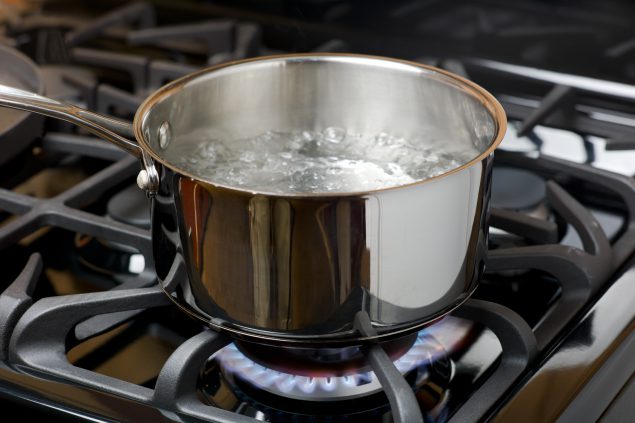5 Kitchen Tips You'll Never Forget
Up your game in the kitchen by putting these clever lessons into practice immediately.
1: Cover the pot when bringing water to a boil.
There’s a reason we set the heat to high when bringing water to a boil — the faster water is able to heat up, the faster it will come to a boil. Common sense, right? Take things one step further by covering the pot, trapping in heat and cutting down on the time needed to bring the water to a boil. Try it when cooking pasta, steaming vegetables or heating up a soup. (However, forgo this tip when a recipe calls for leaving a pot uncovered, so as to not affect recipe cooking times.)
2: After chopping food, use the dull end of a knife to scrape the contents from the work surface.
Ingredients like onions are often chopped, then scraped into a bowl or cooking vessel. Always flip the blade over to use the end opposite of the sharpened blade for scraping. Otherwise, the blade will dull considerably, making it less efficient and more likely to slip when chopping or slicing.
3: Heat stainless steel cookware correctly to keep food from sticking.
Place the cooking vessel over medium to high heat for one to three minutes; the pot or pan will be ready when you add a drop of water to the pan and it immediately forms a bead of water that rolls around the pan. (If the water drop sizzles, wait another 20 to 30 seconds; if it begins to spit, let the pan cool off for a bit before trying again.) Add oil at this time, tilting the pan to coat the surface and allowing the oil to heat up for about a minute. At this point, the stainless steel surface will be ideal for browning ingredients without sticking — even delicate foods like eggs and fish. The success of this process relies on a scientific reaction called the Leidenfrost effect, which results in heating the surface to a point where items added to the pan are “suspended” or separated from the surface by gases released upon contact between the ingredients and a properly heated pan.
4: Use the correct measuring tool for the ingredient.
The tool needed to measure an ingredient depends on whether the ingredient is liquid or dry. Liquid ingredients, such as water, oil or honey, are measured in what is known as a liquid measuring cup, which tends to be a single cup with the measurements marked on its interior or exterior wall; be at eye level when measuring an ingredient and fill the cup to the correct line. Dry ingredients, such as flour, any spices or condiments, like ketchup or mayonnaise, should be measured into dry measuring cups. Dry measuring cups typically come as a set of cups with each cup individually marked with its corresponding measurement; fill the correct measuring cup with the ingredient, then level the surface using a knife, spatula or any other flat edge. Measuring spoons are fine to use for both liquid and dry ingredients, as the difference is so minimal in these small amounts that it won’t affect the end result.
5: Season food to taste.
The flavor of a dish depends on a multitude of variables, including freshness of ingredients, how it was prepared and how it is seasoned. Once salt and/or pepper has been added to a savory dish, taste it — if it tastes bland or lacks flavor, season it more and taste again. It takes a seasoned hand to know how much salt is needed without tasting, and the difference between a properly seasoned dish and one that is underseasoned is obvious once you find the right balance. The pros sprinkle on the salt from high above a dish, about 12 inches away, to allow for an even coating and to keep the salt from being too concentrated in any one area. To prevent oversalting, use a little bit at a time to start.












Post a Comment